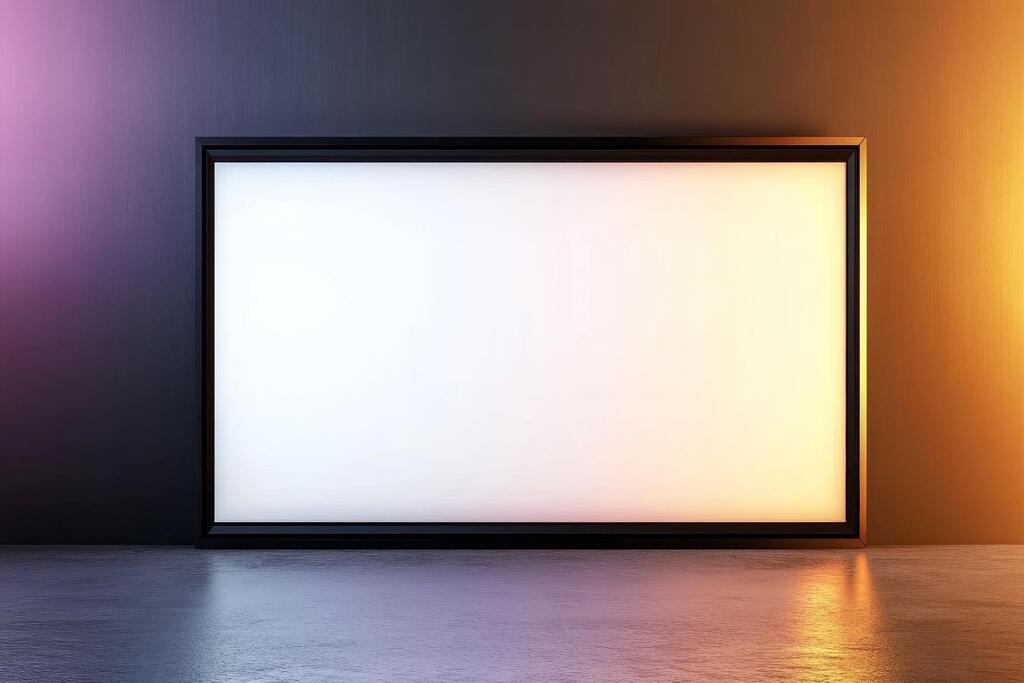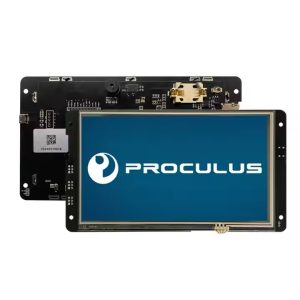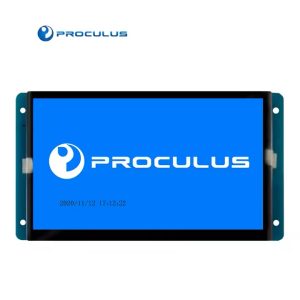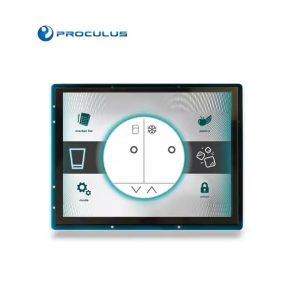LCD display backlight: what it is and how to choose
Choosing the right LCD display backlight is essential for achieving optimal screen brightness, clarity, and efficiency in any project.
Since LCD panels do not emit light on their own, a reliable backlighting solution is required to ensure visibility across different environments.
From industrial equipment to consumer electronics, selecting the right backlight technology impacts energy consumption, color accuracy, and overall display performance.
In this guide, we’ll explore the different types of LCD display backlights and how to choose the best one for your application. Keep reading!
 Choosing the right LCD display backlight is essential for achieving the desired performance, efficiency, and longevity in your project.
Each application has specific requirements, whether it’s a rugged industrial system, a high-contrast medical display, or a power-sensitive portable device.
Evaluating key factors such as brightness, power consumption, color accuracy, size, and durability, can help you make an informed decision that balances quality and cost-effectiveness.
Choosing the right LCD display backlight is essential for achieving the desired performance, efficiency, and longevity in your project.
Each application has specific requirements, whether it’s a rugged industrial system, a high-contrast medical display, or a power-sensitive portable device.
Evaluating key factors such as brightness, power consumption, color accuracy, size, and durability, can help you make an informed decision that balances quality and cost-effectiveness.
What is an LCD display backlight?
An LCD (Liquid Crystal Display) backlight is an essential illumination system used in LCD screens to enhance visibility and image quality. Unlike OLED or MicroLED technologies, LCDs do not generate their own light. Instead, they rely on an external backlight source to illuminate the liquid crystal layer, which manipulates light to create images. Backlights are typically placed behind or along the edges of an LCD panel, with light diffusers ensuring even brightness distribution. The choice of backlight directly impacts factors such as power efficiency, brightness, contrast ratio, and color accuracy. Depending on the application, different types of backlight technologies, including LED, Mini-LED, CCFL, Quantum Dot, and EL, can be used to optimize display performance. Each type offers unique advantages, such as enhanced durability, improved energy efficiency, or superior color accuracy, making the selection of the right backlight crucial for achieving the desired display performance.Why use LCD display backlight in your project?
LCD backlights play a pivotal role in ensuring that displays remain visible, vibrant, and functional across various environments. Their importance extends beyond simple illumination, offering multiple advantages for display-dependent applications:Improved Readability in Any Lighting Condition
Whether used indoors, outdoors, or in dimly lit environments, an effective backlight ensures clear, legible content. High-brightness LED and Mini-LED backlights, for example, are widely used in outdoor signage, automotive dashboards, and medical displays that require consistent visibility.Optimized Power Efficiency
Energy-efficient backlight technologies, such as LED and Quantum Dot, reduce power consumption while delivering high brightness, making them ideal for battery-powered and portable devices.Extended Display Lifespan
Choosing a durable backlight system enhances display longevity. Traditional CCFL backlights, for instance, degrade faster than LED-based solutions, which offer superior lifespan and reliability.Enhanced Color Performance
Advanced backlighting systems, like Quantum Dot and Mini-LED, provide enhanced color accuracy and higher contrast ratios, making them ideal for professional-grade displays, such as medical imaging monitors and high-end industrial control panels.Application Versatility
From industrial control systems and automotive displays to consumer electronics and smart home interfaces, backlit LCD technology is widely used across industries, offering tailored solutions to different needs.How to choose the best LCD display backlight for your project?
 Choosing the right LCD display backlight is essential for achieving the desired performance, efficiency, and longevity in your project.
Each application has specific requirements, whether it’s a rugged industrial system, a high-contrast medical display, or a power-sensitive portable device.
Evaluating key factors such as brightness, power consumption, color accuracy, size, and durability, can help you make an informed decision that balances quality and cost-effectiveness.
Choosing the right LCD display backlight is essential for achieving the desired performance, efficiency, and longevity in your project.
Each application has specific requirements, whether it’s a rugged industrial system, a high-contrast medical display, or a power-sensitive portable device.
Evaluating key factors such as brightness, power consumption, color accuracy, size, and durability, can help you make an informed decision that balances quality and cost-effectiveness.
Brightness requirements
The brightness of an LCD display is measured in nits (cd/m²) and determines how well the screen remains visible in different lighting conditions. Indoor displays typically require brightness levels between 200-500 nits.Outdoor applications or those exposed to direct sunlight need at least 1,000 nits or higher for clear visibility. Medical and industrial displays often demand high brightness for better readability in harsh lighting conditions. Some advanced backlight technologies, such as Mini-LED and Quantum Dot, provide high brightness while maintaining energy efficiency. Additionally, local dimming features in some LED and Mini-LED solutions improve contrast without excessive power consumption.Power consumption
Backlighting is a significant contributor to a display’s overall power usage, making it a critical consideration for battery-operated or energy-efficient designs. LED backlights are the most efficient and widely used due to their low power requirements. CCFL backlights consume more power and require inverters, making them less suitable for modern applications. OLED and MicroLED displays are self-emissive, meaning they don’t require a traditional backlight, further reducing power consumption. Choosing an LED or Quantum Dot backlight with an intelligent brightness control system for projects prioritizing battery life can optimize energy usage.Color quality
The backlight type plays a significant role in the display’s performance for applications where colour accuracy and vibrancy are crucial. Standard white LED backlights provide good color reproduction but may have limitations in covering wide color gamuts. Quantum Dot backlights significantly enhance color accuracy, achieving near 100% DCI-P3 and AdobeRGB coverage, making them ideal for high-end displays. Mini-LED backlights offer superior contrast and better local dimming, improving color depth and image quality. Industries such as medical imaging, broadcasting, and professional design require displays with superior color consistency and high dynamic range (HDR), making Quantum Dot and Mini-LED ideal choices.Size and thickness
The physical dimensions of the backlight must align with the display’s design constraints, especially for compact or ultra-thin devices. Edge-lit LED backlights are a preferred choice for slim displays, as they allow for thinner panel designs. Direct-lit LED and Mini-LED backlights require more space but provide better brightness uniformity and contrast. Electroluminescent (EL) and fiber optic backlights are extremely thin and lightweight, making them ideal for specialized applications like avionics and instrumentation. If your project has strict thickness constraints, opting for a high-efficiency edge-lit LED or an EL backlight can ensure a balance between performance and size.Special features
Modern backlights offer a range of features that can enhance display performance for specific use cases. For example, local dimming (Mini-LED, OLED) improves contrast by adjusting brightness in different areas of the screen. Adaptive brightness control, on the other hand, optimizes power consumption and enhances usability in varying lighting conditions. Flexible and thin backlights (EL, Fiber Optic) are excellent for curved or non-traditional display designs. Now, HDR-capable backlighting (Quantum Dot, Mini-LED) enables richer colors and better contrast for entertainment and professional applications. If your display requires advanced functionality, selecting a backlight with specialized features can provide a competitive advantage in terms of performance and user experience.Consider future upgrades
As display technologies evolve, ensuring your backlight choice is future-proof can save costs and simplify future upgrades. Modular backlight designs allow for easier replacement or upgrades. Emerging technologies like MicroLED may become more affordable, offering new possibilities for future applications. Sustainability considerations favor LED-based backlights, which are more energy-efficient and environmentally friendly than CCFL alternatives. If your project has a long product lifecycle, selecting a backlight with upgradability and future compatibility can enhance longevity and reduce redesign efforts.Proculus Technologies Leads From the Front
In the world of high-performance LCD displays, Proculus Technologies is a trusted leader in providing cutting-edge UART TFT LCD modules that integrate seamlessly into a wide range of applications. Our solutions are engineered for efficiency, durability, and superior display quality, ensuring that your projects achieve the highest level of performance. Here’s what sets us apart:- Industry-Leading Display Technology: Our LCD modules incorporate advanced backlight solutions, including high-brightness LED and energy-efficient Quantum Dot technology, to deliver exceptional clarity and color vibrancy;
- Simplified Integration: Designed with developers in mind, our UART TFT LCD modules streamline the process of implementing interactive graphical interfaces, reducing development time and complexity;
- Proven Reliability in Demanding Applications: Proculus displays are widely used in industrial, automotive, medical, and consumer electronics, where precision, durability, and consistency are critical;
- Dedicated Support and Resources: Our team provides comprehensive documentation, development tools, and technical support, ensuring smooth integration and long-term success for your project.
Conclusion
Selecting the right LCD display backlight is essential to achieving optimal brightness, efficiency, and image clarity in your project. By considering factors such as power consumption, color accuracy, durability, and integration ease, you can ensure that your display performs reliably across various environments. At Proculus Technologies, we are committed to delivering high-quality LCD solutions that combine innovation, efficiency, and seamless integration. Whether you’re designing for industrial, medical, automotive, or consumer applications, our UART TFT LCD modules provide the performance and reliability you need.
Category:
Author:
Client:
Date:
PHP Code Snippets Powered By : XYZScripts.com
 English
English


